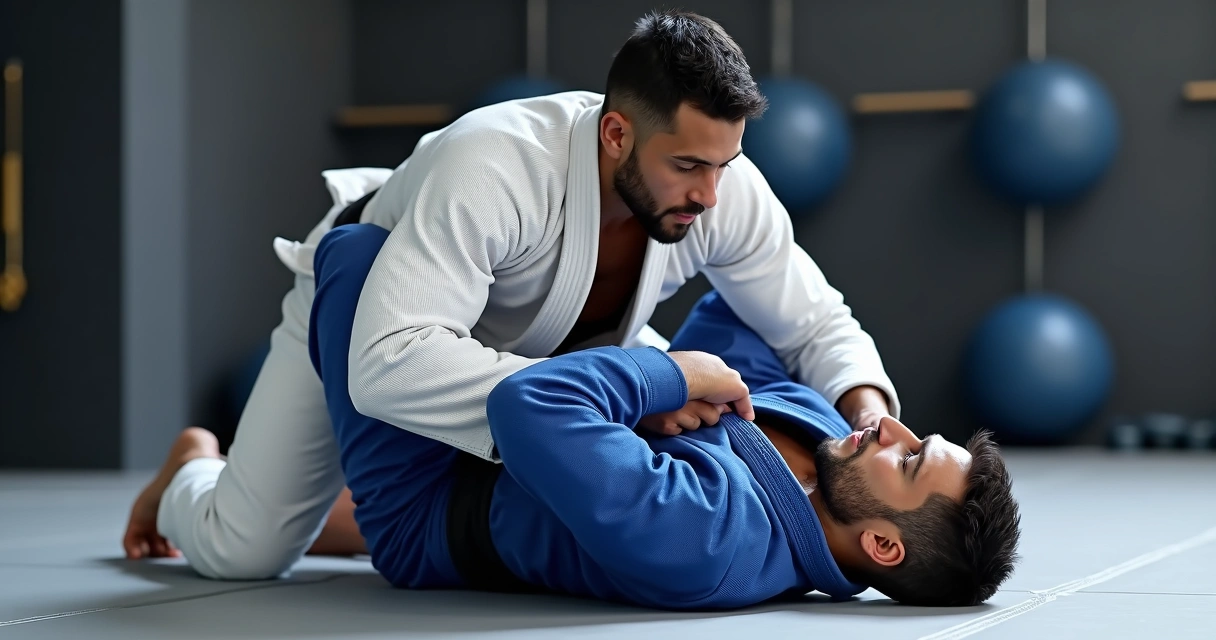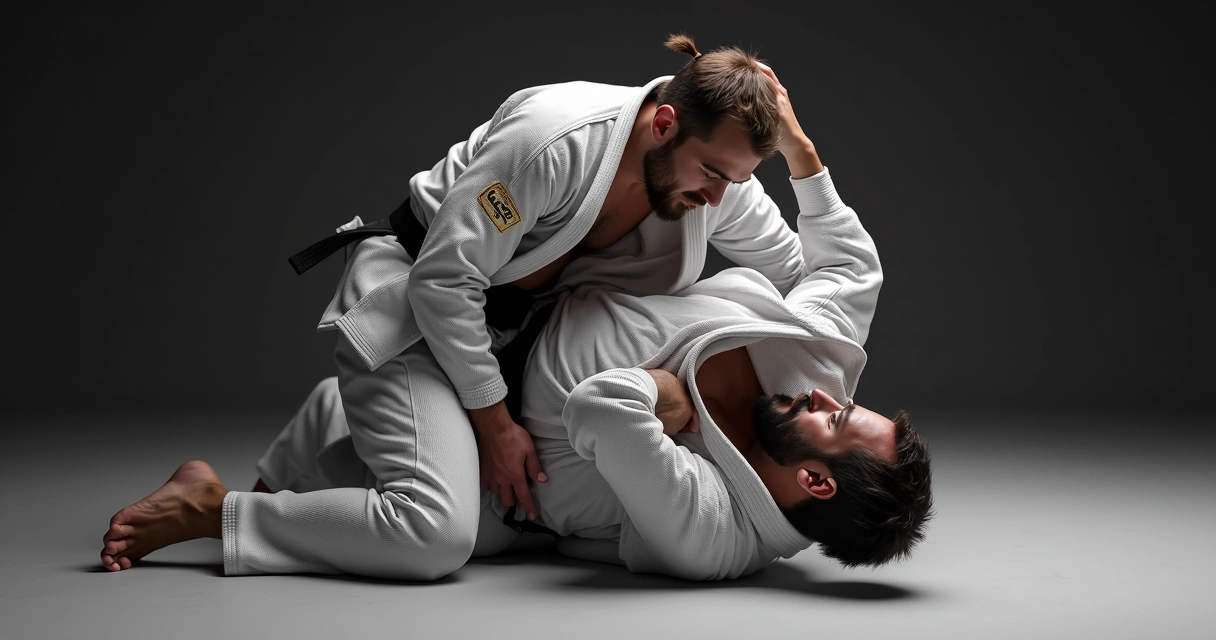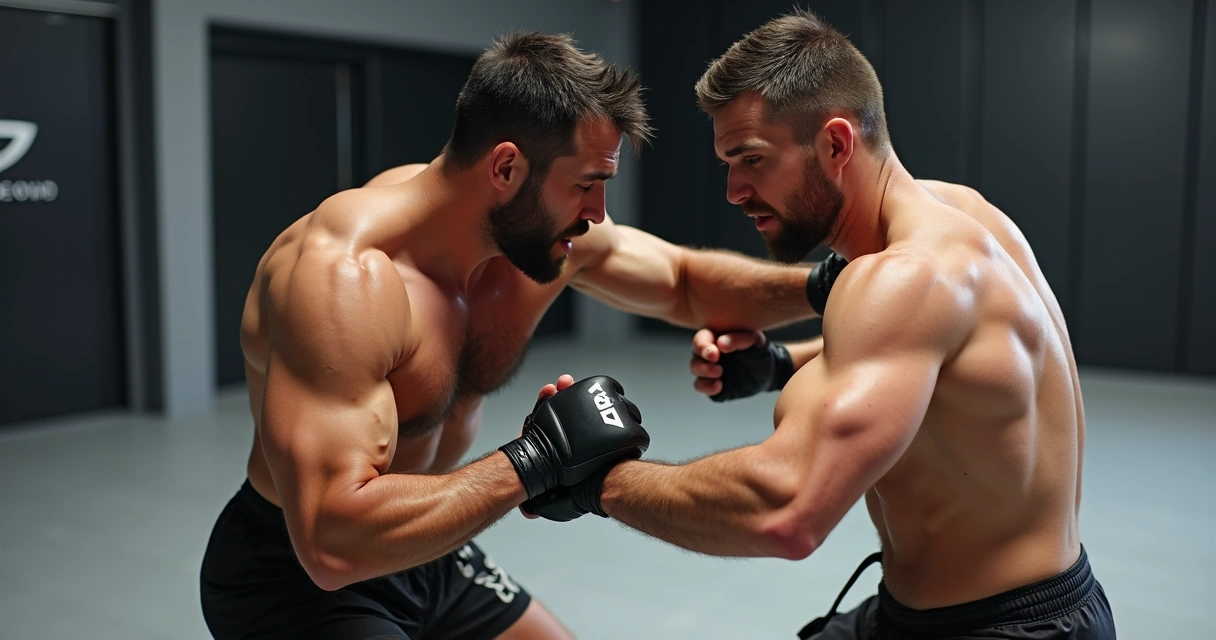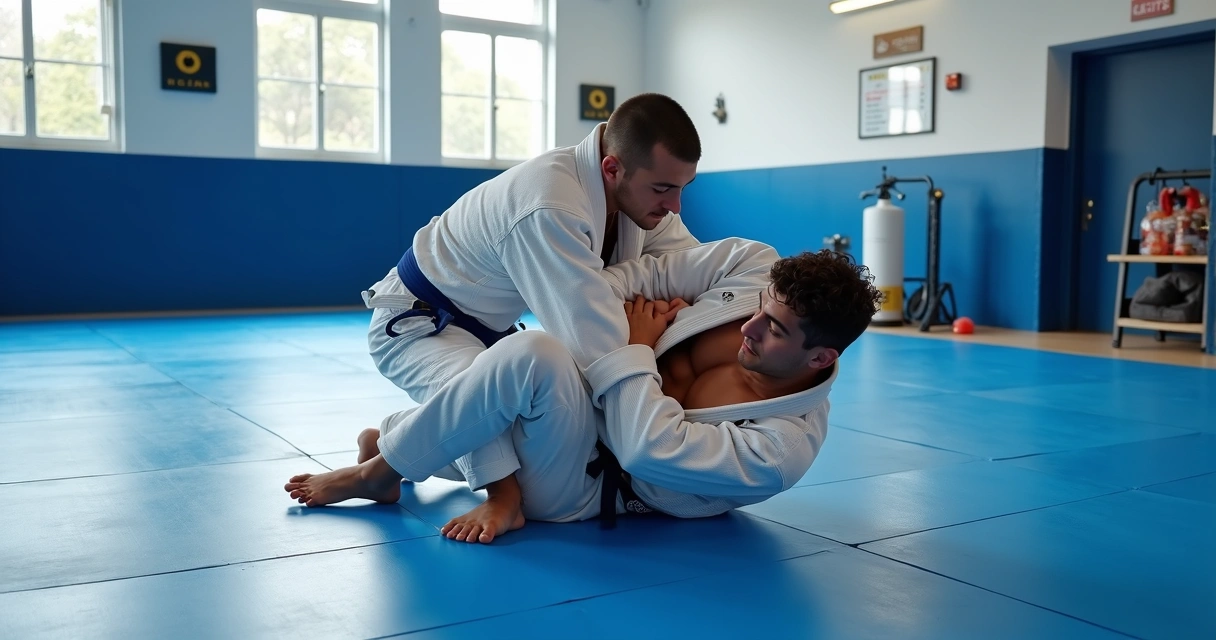The shoulder lock known as the omoplata is more than just a submission. In Brazilian Jiu-Jitsu, it sits at a crossroads: part submission, part control, part sweeping tool, and, if we're honest, part riddle. For new grapplers, the mechanics can feel like tying a knot behind your own back, while seasoned practitioners will tell you: once you understand the angles and the grips, it becomes a reliable weapon from guard and a crafty (sometimes sneaky) way to change the tempo of a roll.
I can still recall my first successful omoplata. The motion felt clunky, my opponent rolled out at the last second, and my own shoulder ached from an awkward posture. But I also remember the spark of possibility. This move, done well, lets you tame powerful, athletic opponents. And if you keep notes—real, honest notes after class—you’ll start to see details that vanish during the heat of sparring. That’s exactly why tools like BJJ Notes exist: to turn random flashes of insight and scattered techniques into an organized map of your jiu-jitsu journey.
Control the shoulder, and you control the fight.
What is the omoplata?
This move is, simply put, a figure-four shoulder lock done with your legs, not your arms. In essence, it's like applying a kimura using your hips and thighs. Classically, it's entered from guard positions—a top player leaves an arm vulnerable, the guard player threads their leg across the back and pins the shoulder while rotating their own body to apply pressure.
The omoplata is not nearly as flashy as some other submissions but has three main uses:
- Finishing the match via shoulder lock (submission).
- Forcing the opponent to roll or base, allowing you to sweep to top position.
- Creating transitions to other attacks, like armbar or triangle.
The omoplata may not be as common as the triangle or armbar, but its control, versatility, and chain attacks make it a favorite among technical grapplers who want to slow down aggressive opponents or catch moves that slip past the untrained eye.
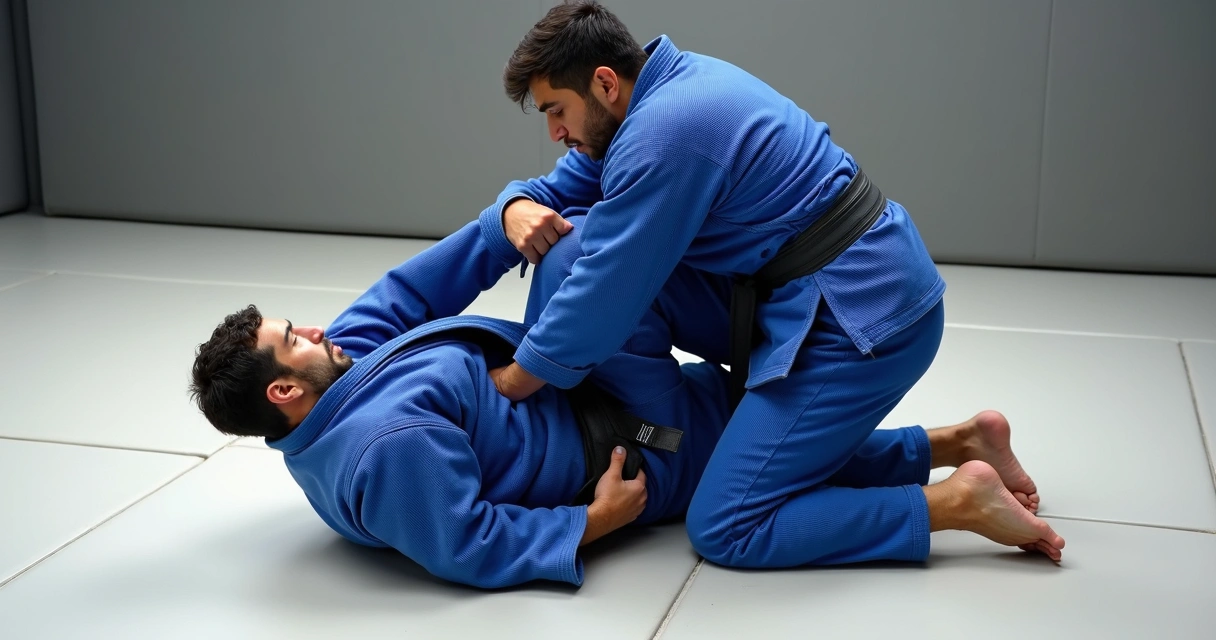 The omoplata step-by-step: classic setup from closed guard
The omoplata step-by-step: classic setup from closed guard
1. Break posture and isolate an arm
First, your goal is to force your opponent to post an arm or otherwise extend it from the safety of their own body. Sometimes, this happens when you break their posture with your legs or grip inside their sleeve, wrist, or belt.
- Grip their wrist with your same-side hand (for example, your left hand to their right wrist).
- With your other hand, control behind their triceps or grab the fabric near their armpit/lat area.
- Pull that arm forward across your centerline, so it's basically pointing at your navel or further.
2. Open your guard and shift your hips
You cannot apply this submission with your legs locked around their waist. So, open your guard and quickly shoulder-walk or pivot your hips out to the opposite side of the arm you're attacking. If it's their right arm, you need to move your hips left and a bit downward.
- Use your foot on their hip or floor to help you angle out.
- The further you pivot, the easier it’ll be to throw your leg across their back.
3. Thread your leg across their back and 'break their posture'
Swing your leg (on the same side as their isolated arm) out and over their arm, so your thigh lands on their upper back and your foot lands near (or past) their head. Your other leg bumps their body or shoulder to prevent them from posturing up.
- Your attacking leg's hamstring should press upon their upper back and trap their upper arm.
- Your foot should ideally end up past their face, pointing toward the mat.
4. Sit up and pivot for the angle
This step often gives people trouble. You must now sit up, using momentum or your free hand, and ‘swivel’ around so you end up next to their torso, perpendicular to their shoulders. If you stay flat, finishing will feel weak.
- Prop yourself up with your free hand if needed.
- Try to sit all the way up, so your chest is almost touching their ribs or stomach.
- If possible, catch their far hip or belt to prevent them from rolling.
5. Lock down and finish
Now, pinch your knees to glue their arm between your legs. Put your foot flat on the mat to block their head (to keep them from posturing or running away). Begin to ‘walk’ your body away from their shoulder, at a right angle, while folding your chest toward the mat.
- Apply pressure slowly, aiming to rotate their trapped arm behind their back with your thigh and hip pressure.
- Tap comes when their shoulder is at its rotational limit.
You finish with your whole body, not just your legs.
Timing, leverage, and leg positioning tips
It’s common for new practitioners to struggle with angles and control. Here are small tips that often make a huge difference:
- Don’t rush the finish: Stabilize your opponent before going for the tap. If you rush, experienced opponents will roll or posture out.
- Pinch your knees: This is what keeps their arm trapped. Wide knees mean easy escapes.
- Sit up tall: If your back stays flat, you have little leverage. Aim to get chest to chest or rib cage to chest.
- Plant your foot by their head: Controls their posture. Without this, they’ll stand up or slip out.
- Keep your hips close to their hips: Space helps them roll free.
If it still feels awkward, make a note in your journal or use a digital tool like BJJ Notes to keep track of what detail is tripping you up. Over time, you’ll see patterns of mistakes and can fix them with smart drilling.
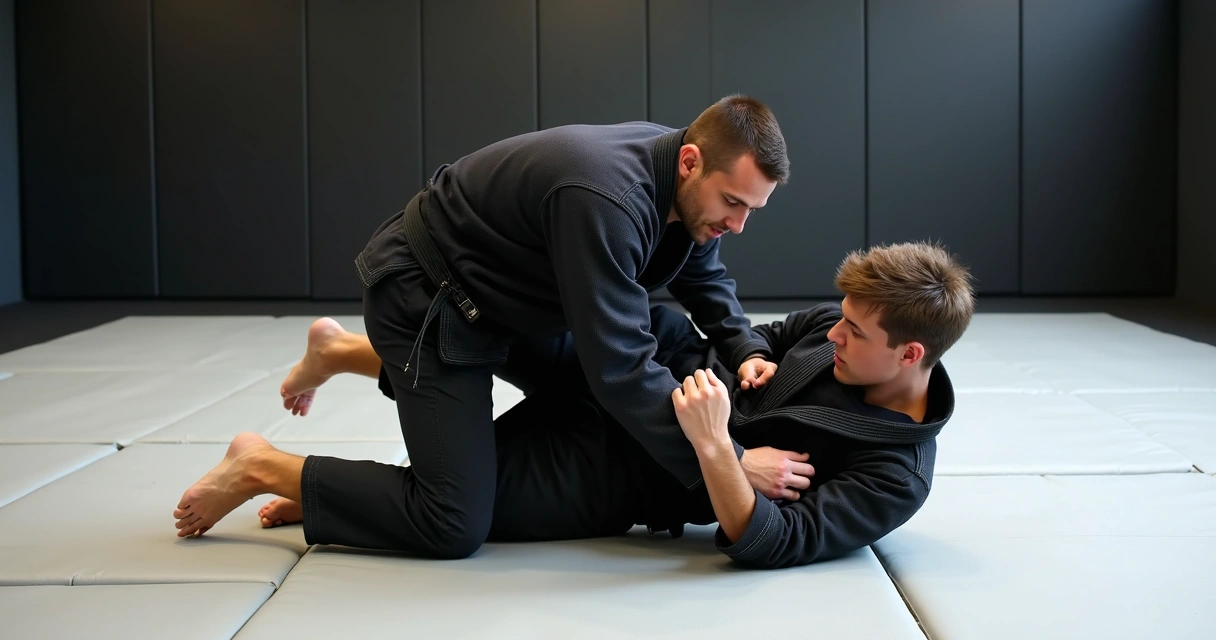 Connecting the shoulder lock to triangle and armbar attacks
Connecting the shoulder lock to triangle and armbar attacks
One of the best things about this submission is how easily it connects to other powerful attacks. Often, you’ll find an opponent who recognizes the danger and postures up or rolls, opening a chain of opportunities.
Triangle choke transitions
As you attempt the omoplata, if your opponent pulls their trapped arm under or starts to circle their head free, pull your leg back around their neck and clamp your knees. Their posture gives you all the leverage to attack the triangle choke.
Armbar connections
Sometimes, an opponent will defend by driving forward hard or stacking into you. Use their pressure to kick your legs over their head and spin into a straight armbar. Practiced together, you’ll start to see them as a system, not isolated moves.
- If the omoplata fails, be ready to transition.
- If you threaten the triangle, watch how often the omoplata becomes available.
The more you study and note these connections, the stronger your guard game becomes.
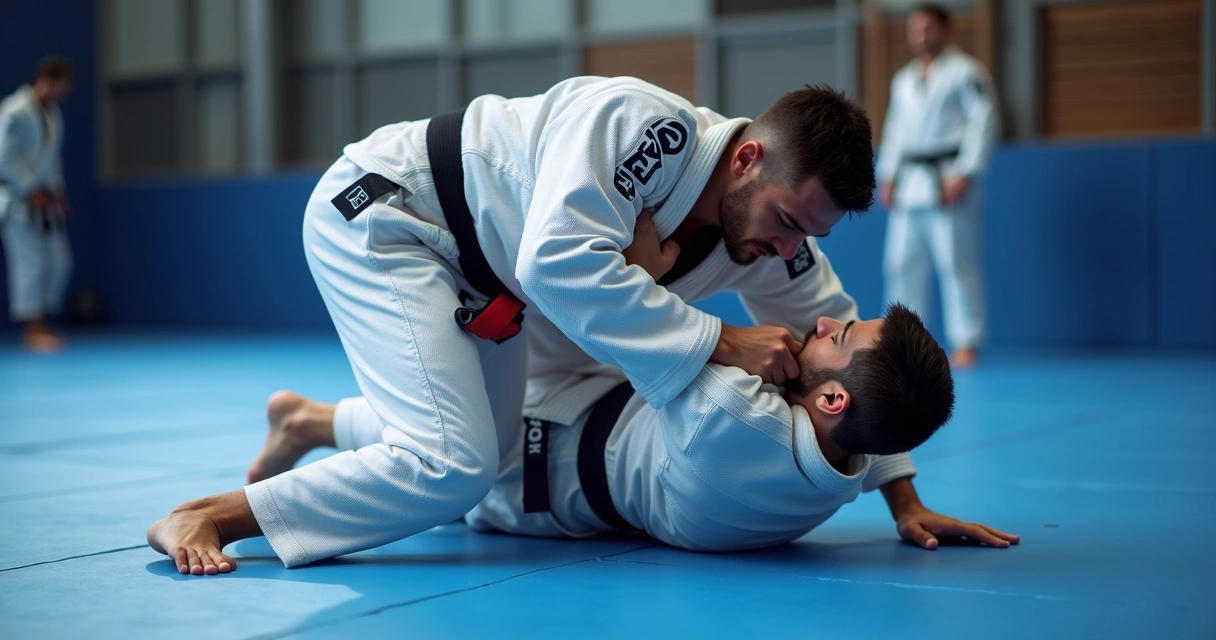 Sweeping and advancing from omoplata
Sweeping and advancing from omoplata
Many high-level competitors rarely finish this as a pure submission. Instead, they use it as a way to force scrambles, sweeps, and even back takes.
- Sweep to mount or side control: As you bring your chest toward the mat, and they try to posture up or somersault to escape, follow them to the top position. Stay glued to their hips. Most often, you’ll land in side control, but mount is sometimes possible if you keep hip pressure.
- Take the back: If your opponent bases heavily or tries to tripod scramble, there are windows to thread a hook and come up behind them.
- Get points for guard pass or sweep: Even if you don’t finish, most tournaments will award sweep or guard pass points for a well-controlled omoplata exchange.
For tactical players, it becomes a launching point for many forms of control.
Common setups and entries
While the classic path from closed guard is a staple, you’ll find creative entries from all over. Here are a few to add to your collection—and maybe jot down in BJJ Notes after class:
- From open guard, using lasso or spider hooks to manipulate the opponent’s arm.
- Leg drag defense—thread an omoplata as they try to pass and overcommit a grip.
- Cross-collar grip break: Use their attempt to strip your grip to drag their arm across and shoot the lock.
- From failed triangle choke or armbar attempts—when the opponent postures up or hides an arm, switch angles for a quick entry.
- Standing opponent: Snap their arm out as they reach for a collar or belt and quickly pivot into the attack.
In each scenario, look for an extended arm and the chance to break their posture. The more setups you experiment with, the less predictable you become.
Drilling, troubleshooting, and maintaining control
There’s a saying: “Drilling is the prescription—sparring is the test.” This couldn’t be more true for the omoplata. You need repetitions, not just theory.
Tips for drilling:
- Focus on each part: Isolate the hip movement, leg threading, and chest-to-ribs sit-up.
- Drill both submission finish and sweeping mechanics equally.
- Vary your speed—sometimes slow for detail, sometimes fast for muscle memory.
- Have a partner ‘give’ you escapes so you can practice transitioning to back takes or armbars.
Troubleshooting failed attempts is part of the game. If they posture up every time, make a note of your angle or lack of knee pinch. If escapes succeed when they roll, jot down what you could do to block their hips or sit up faster.
Maintaining control throughout is a matter of small details:
- Keep tension in your legs—the lock happens when space is denied to your opponent.
- Clamp your thighs around their arm and shoulder, almost as if you were squeezing a ball between your legs.
- If they turn away, follow their movement—do not let your hips get left behind.
You might even want to cross-reference your notes with data from injury studies in BJJ, as shoulder and elbow submissions (like armbar and kimura) account for most submission injuries. Doing the move correctly protects your training partners and avoids time lost on the mat.
Defenses and counters
Of course, no attack is perfect. Training partners will learn your timing and escape attempts become routine. The classic escapes include:
- Forward roll escape: The opponent rolls forward over their trapped shoulder to relieve pressure and escape—follow closely to maintain top position.
- Posture up hard: If they manage to get their head and chest above your thighs, the pressure disappears and the submission is lost.
- Hand fight and hip turn: Good hand fighting breaks your grip; if they turn their hips toward you, the angle for finishing vanishes.
Prevention comes down to control. Pin their hip, block their head, and keep a tight knee pinch.
Remember that injuries are not rare, as shown by studies on orthopedic injuries in BJJ. Shoulders and elbows are high-risk zones. Proper technique, tapping early, and attentive drilling protect both you and your partners. Organize your notes about which escapes trouble you most so you can address them in open mat time.
Small details make big escapes. Miss one, and they’re gone.
Mistakes to watch for and how to fix them
No technique is bulletproof, but certain flaws appear again and again:
- Wide knees: Allowing space between your knees lets their arm slip free. Pinch tight, always.
- Flat on your back: If you stay flat, you lose leverage and your opponent can easily escape or resist.
- Poor angle: Failing to pivot your hips past perpendicular to their torso weakens the finishing pressure.
- Loose grip on their hip/belt: Without a strong grip, they roll quickly or posture up.
- Only chasing the tap: Sometimes sweeping or advancing is more valuable than stubbornly chasing the submission.
Make sure to log what went wrong after failed sparring attempts—using an app like BJJ Notes can help you see patterns that verbal feedback misses.
Injury prevention and safety in omoplata training
While the omoplata is not the most dangerous submission, it works on vulnerable joints. According to recent BJJ injury research, armlocks and shoulder locks are among the most common causes of submission-related injuries. Always apply pressure gradually, communicate with your partner, and tap early when caught.
Other studies on long-term BJJ injuries underline the need for smart note-taking and progression tracking. Most injuries, especially among new practitioners, stem from repeated small mistakes—poor angle, lack of warm-up, or ignoring fatigue. Accurate tracking (even as simple as one line per class about what you learned or struggled with) gives you an edge in both safety and performance. That’s one of the reasons BJJ Notes is so popular for practitioners who want to maximize learning while minimizing injury risk. Subtle details make all the difference.
Final thoughts: consistency, reflection, and the shoulder lock journey
The omoplata is a journey, not a shortcut. You’ll stumble at first. Some classes it will click, some days it will seem impossible. But with thoughtful repetition—both on the mat and in your training logs—you will start to see progress. You’ll know it’s working when you stop thinking “How do I set this up?” and start asking “How can I use this to connect my attacks together?”
Incorporate notes, feedback from partners, and smart study to upgrade your mat performance. The move itself is a perfect example of Brazilian Jiu-Jitsu science: it rewards patience, precision, timing, and reflection.
Learn, record, and evolve. That’s the path.
If you’re ready to take your training and technical memory a step further, keep your BJJ learning integrated, rich, and organized by exploring dedicated platforms like BJJ Notes. It’s time to stop forgetting what you learned and start accelerating your progress—one shoulder lock at a time.
Frequently asked questions
What is an omoplata in BJJ?
An omoplata in Brazilian Jiu-Jitsu is a submission technique that uses the legs to trap and rotate an opponent's arm, creating a shoulder lock. It’s usually attacked from various guard positions and is valuable for both submission finishes and controlling or sweeping opponents. The move mimics a kimura shoulder lock, but uses leg strength and hip rotation rather than arms.
How do I escape the omoplata?
Common escapes include rolling forward over the trapped shoulder to relieve pressure, posturing up hard to free the arm, and turning the hips toward the opponent while fighting grips. Timing is crucial—early recognition usually leads to an easier escape. Effective prevention means never letting your arm get isolated in the first place, and always maintaining strong posture during guard passing.
Is the omoplata effective for submissions?
Yes, this shoulder lock is an effective submission, particularly against opponents unfamiliar with it or caught at the right angle. Its control is powerful, but in high-level competition, it’s often used more to sweep, transition, or create scrambles than for direct submission, as many opponents have reliable escapes or rolling defenses. Still, it can absolutely lead to taps when executed with tight control and correct angles.
What are common mistakes with omoplata?
Common mistakes include failing to pinch the knees, staying flat on the back instead of sitting up, missing the correct hip angle, releasing the opponent’s hip or belt grip, and focusing only on submitting rather than using the technique for sweeps or transitions when necessary. Beginners also often neglect to control the opponent’s posture or head, making escapes easier.
How can beginners practice the omoplata safely?
Beginners should start with slow, controlled drilling—focusing on each movement separately (like hip escape, leg threading, and sitting up). Practice with a partner who knows how to tap and communicate. Apply finishing pressure gradually and stop as soon as your partner taps. Track your practice and observations to spot errors and make adjustments—digital notebooks like BJJ Notes can help you refine your approach and minimize injury risk.

